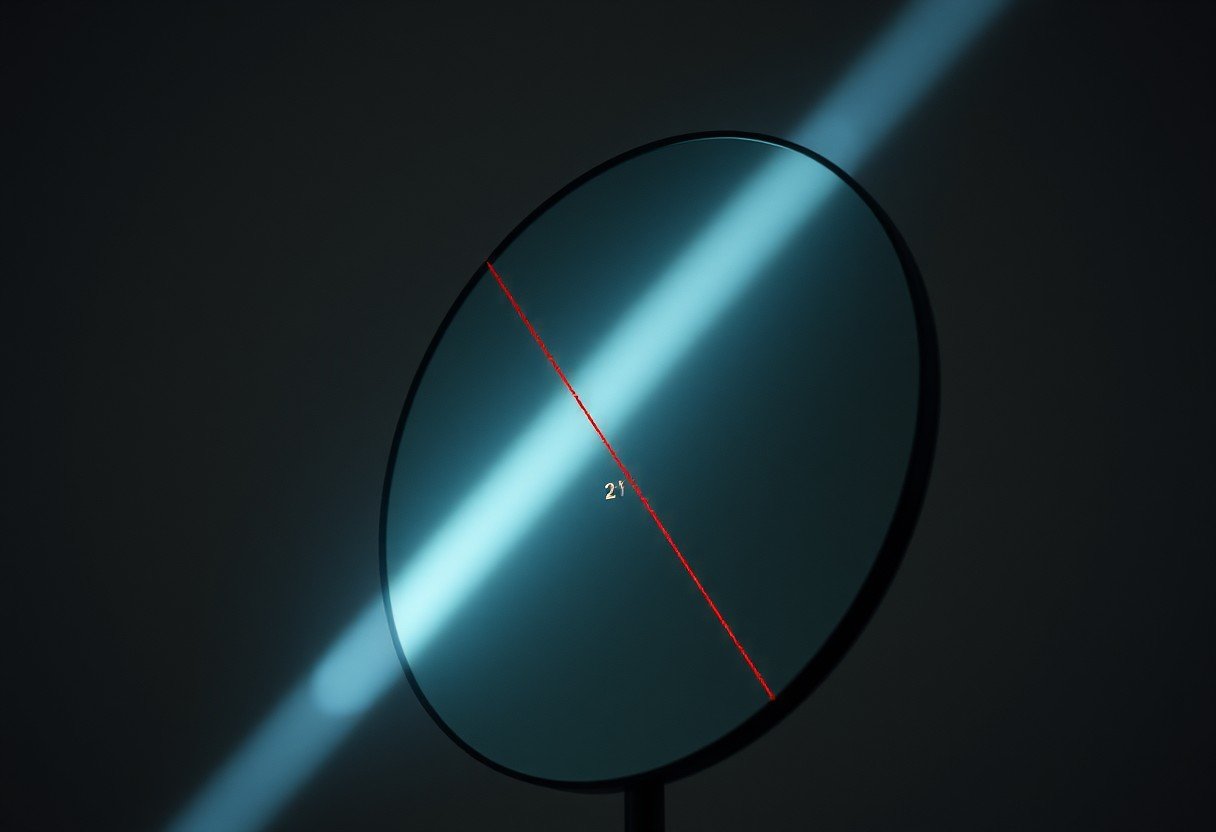Understanding electric flux through a cube is a fundamental concept in electromagnetism that helps explain how electric fields interact with three-dimensional objects. For students and engineers, grasping this principle is key to analyzing everything from simple circuits to complex antenna designs. This guide breaks down how to calculate the electric flux through each of the cube’s six faces, making a complex topic simple and accessible.
What is Electric Flux? A Simple Explanation
Think of electric flux as a way to count the number of electric field lines passing through a surface. It gives us a measure of how much of the electric field is “flowing” through a specific area. If many field lines pass straight through a surface, the flux is high. If they run parallel to the surface or if the field is weak, the flux is low.
The calculation for electric flux considers three main factors: the strength of the electric field (E), the area of the surface (A), and the angle (θ) between the electric field lines and a line perpendicular to the surface (called the normal).
The mathematical formula that brings these elements together is Φ = E · A · cos(θ). This simple equation is the foundation for calculating flux on any flat surface, including the faces of a cube. Understanding this relationship helps you see how changing the field’s direction or strength can dramatically alter the flux.
The Role of Symmetry in a Cube
A cube is a perfectly symmetrical object. It has six identical square faces, all edges are the same length, and all angles are 90 degrees. This geometric perfection is incredibly useful when analyzing electric fields.
Because of this symmetry, we can often make simplifying assumptions. For instance, if a single charge is placed exactly at the center of the cube, the electric field it produces will pass through each of the six faces in exactly the same way. This symmetry means the total electric flux from the central charge is distributed equally among the six faces.
This principle saves an enormous amount of complex calculation. Instead of analyzing each face individually with complicated integrals, we can calculate the total flux and then simply divide by six to find the flux through a single face.
Using Gauss’s Law with a Cube
Gauss’s Law is one of the pillars of electromagnetism and provides a powerful shortcut for calculating electric flux. The law states that the total electric flux through any closed surface (like a cube) is directly proportional to the total electric charge enclosed within that surface.
The formula is written as Φ = Q_enc / ε₀, where Q_enc is the net charge inside the cube and ε₀ is a constant known as the permittivity of free space.
Gauss’s Law is powerful because it allows you to find the total flux without knowing the details of the electric field at every point on the surface. If you know there is a charge of +5 Coulombs inside a cube, you can immediately find the total flux passing out of the cube without any other information about the field’s shape or direction.
If there is no charge inside the cube (Q_enc = 0), then Gauss’s Law tells us the total net flux through the cube must be zero. This means that for every electric field line that enters the cube, another one must exit.
Calculating Flux in a Uniform Electric Field
One of the most common scenarios involves a cube placed in a uniform electric field, where the field lines are all parallel and have the same strength. Let’s imagine a cube with side length ‘L’ placed in a uniform electric field ‘E’ that points along the positive x-axis.
In this case, the electric field lines are perpendicular to two faces and parallel to the other four.
- Faces Perpendicular to the Field: The field enters the left face and exits the right face.
- Faces Parallel to the Field: The field runs alongside the top, bottom, front, and back faces, meaning no field lines pass through them.
For the four faces parallel to the electric field, the electric flux is zero. This is because the angle between the electric field and the normal vector of these faces is 90 degrees, and cos(90°) = 0.
For the other two faces, we can calculate the flux easily. The area of each face is A = L². On the face where the field enters, the flux is negative, and on the face where it exits, the flux is positive. This leads to a net flux of zero for the entire cube, which makes sense as there is no charge enclosed within it.
| Cube Face | Angle (θ) with Field | Electric Flux (Φ) |
|---|---|---|
| Left Face (at x=0) | 180° | -E · A |
| Right Face (at x=L) | 0° | +E · A |
| Top Face | 90° | 0 |
| Bottom Face | 90° | 0 |
| Front Face | 90° | 0 |
| Back Face | 90° | 0 |
What if the Electric Field isn’t Uniform?
Things get more complex when the electric field is non-uniform, meaning its strength or direction changes from point to point. A simple example is the field created by a single point charge located somewhere other than the cube’s exact center. In this situation, the electric field hitting each face will be different.
Calculating the flux through each face now requires more advanced mathematics, specifically surface integrals. You would need to break down each face into infinitely small pieces, calculate the tiny amount of flux through each piece, and then add them all up.
While the calculation for each individual face becomes difficult, Gauss’s Law still holds true for the cube as a whole. Even in a non-uniform field, the total electric flux through all six faces combined still depends only on the total charge enclosed inside the cube.
Why Electric Flux Matters in the Real World
The concept of electric flux isn’t just a theoretical exercise; it’s fundamental to modern technology. It forms the basis of one of Maxwell’s Equations, which are the set of laws that govern electricity, magnetism, and light. Understanding flux is essential for engineers designing a wide range of devices.
For instance, in electrical engineering, flux calculations are used to design capacitors, analyze electromagnetic shielding to prevent interference, and develop antenna systems for communication. By understanding how electric fields behave around surfaces, engineers can create safer, more efficient, and more powerful electronic systems.
Frequently Asked Questions about Electric Flux
What is electric flux and how is it defined?
Electric flux is a measure of the electric field lines passing through a surface. It is mathematically defined by the formula Φ = E · A · cos(θ) for a uniform field and a flat surface, and it is measured in volt-meters (V·m).
How do you calculate the electric flux through the faces of a cube?
You must consider the electric field’s orientation relative to each face. For a uniform field, use Φ = E · A · cos(θ) for each of the six faces. If a charge is inside the cube, you can use Gauss’s Law (Φ = Q_enc/ε₀) to find the total flux and then divide by six if the setup is symmetrical.
Can the electric flux through a face of a cube be negative?
Yes, a negative flux means that there are more electric field lines entering the surface than exiting it. It typically occurs on the face where the electric field is directed into the cube.
What is the total electric flux through a cube if there is no charge inside?
If there is no enclosed charge, the total electric flux through the cube is zero. This is a direct consequence of Gauss’s Law, meaning that the amount of flux entering the cube must equal the amount of flux exiting it.









Leave a Comment